We are delighted to be dedicating the final Vitrines instalment of our 2024/25 season to archive material, information and clothing that documents the dynamism of the independent fashion scene of Nottingham in the 1980s.
In the years following Beeston-born Sir Paul Smith’s ascendency from a 3x3m store on Byard Lane in 1974 – to bases in London, Paris and Tokyo – many local fashion brands were established, including several by graduates from ‘Trent Poly’, who bucked the moving-to-London trend by committing themselves to the city and starting a new generation of independent labels. Homegrown brands such as G Force, Olto, Vaughan & Franks, Katsu and Cocky’s Shed were a just a few…
These brands combined talent, style discernment, DIY attitudes and cheap rents to start labels, open shops, and form global influence and connection. At one point the city even gained its own style pages in the form of Déspatch, Relay and Débris magazines, providing content as broad ranging as fashion editorial featuring local and international designers, montages of nights at The Garage, and signposting visitors to the shops and studios that were physically and ideologically a long way from the High Street.
The fashion scene that developed placed equal importance on both studio and social time, building a network of close-knit creatives who collaborated and supported one another. This community incapsulated many of the same qualities that gave rise to other significant, and perhaps more well-known cultural communities such as the city’s music, cinema and contemporary art scenes.
The aim of this presentation is to celebrate and help establish a legacy for this important period within the city’s [sub]cultural history. An open call for materials will run in the lead-up and during the exhibition, allowing anyone to submit related materials that will join the exhibition and evolving noticeboard.
Accompanying the exhibition is a suite of specially commissioned essays by independent scholar Ian Trowell. Ian has also provided curatorial consultancy and research to this project, having interviewed several of the key protagonists of that era. Ian writes on subjects including UK subcultures, music, fashion, popular culture, art and media. His book Throbbing Gristle: An Endless Discontent was published by Intellect Books in 2023.
This exhibition has been co-curated with Dr Katherine Townsend, a researcher, educator, practitioner and Professor in Fashion and Textile Practice in the Fashion, Textiles and Knitwear department in the School of Art and Design at Nottingham Trent University.
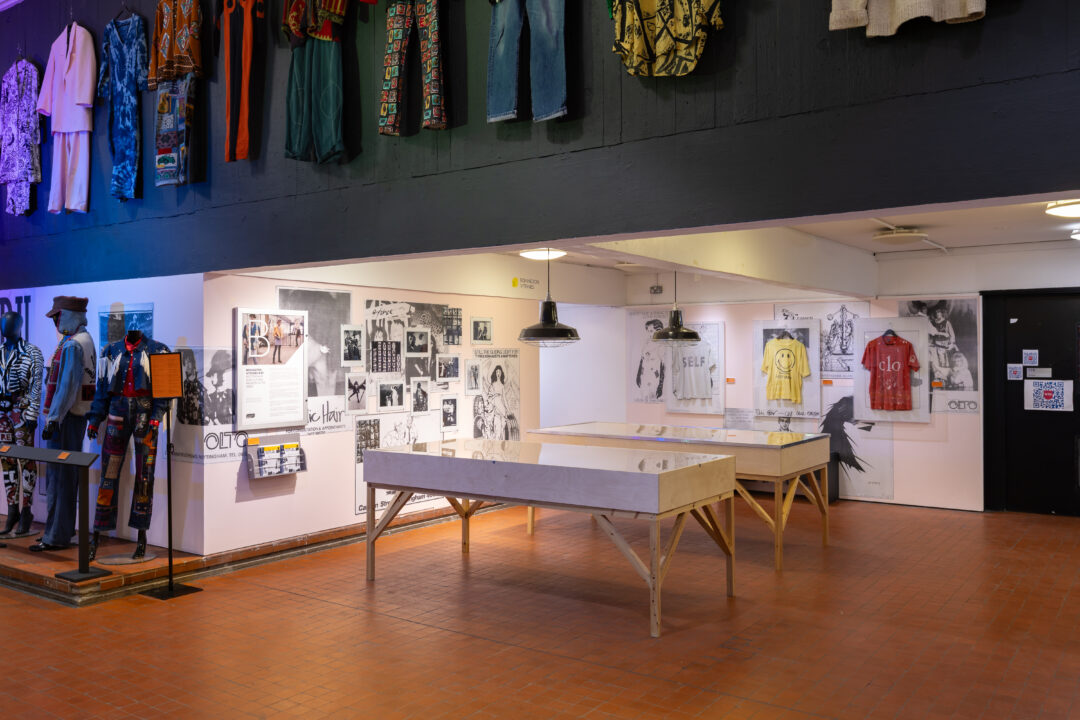
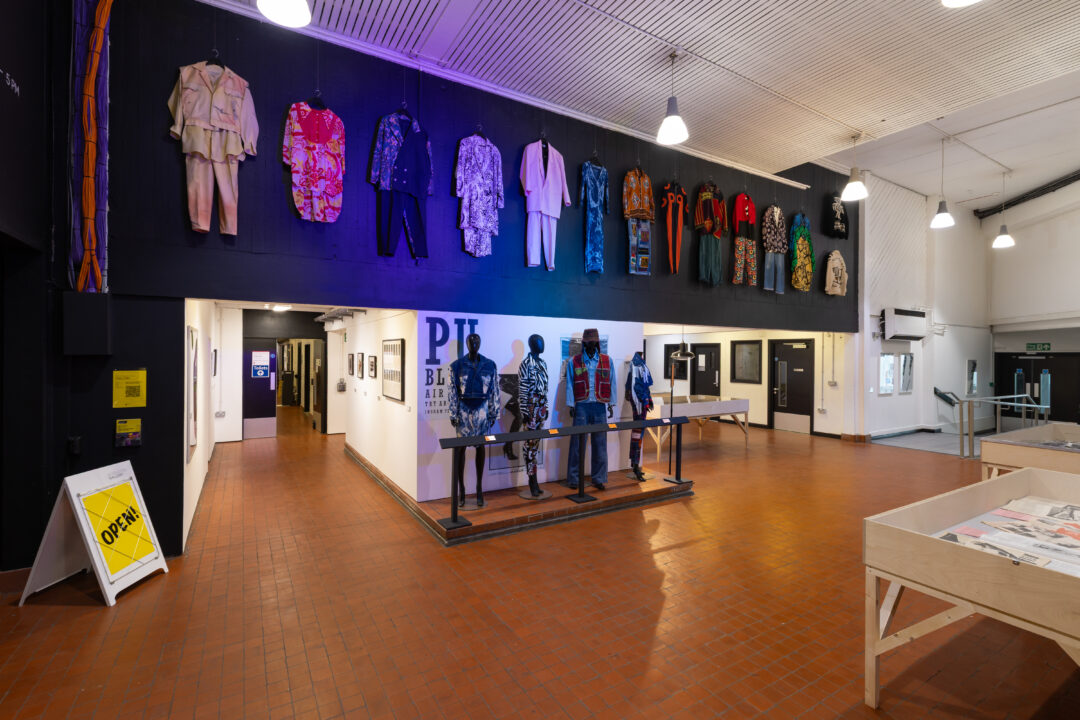
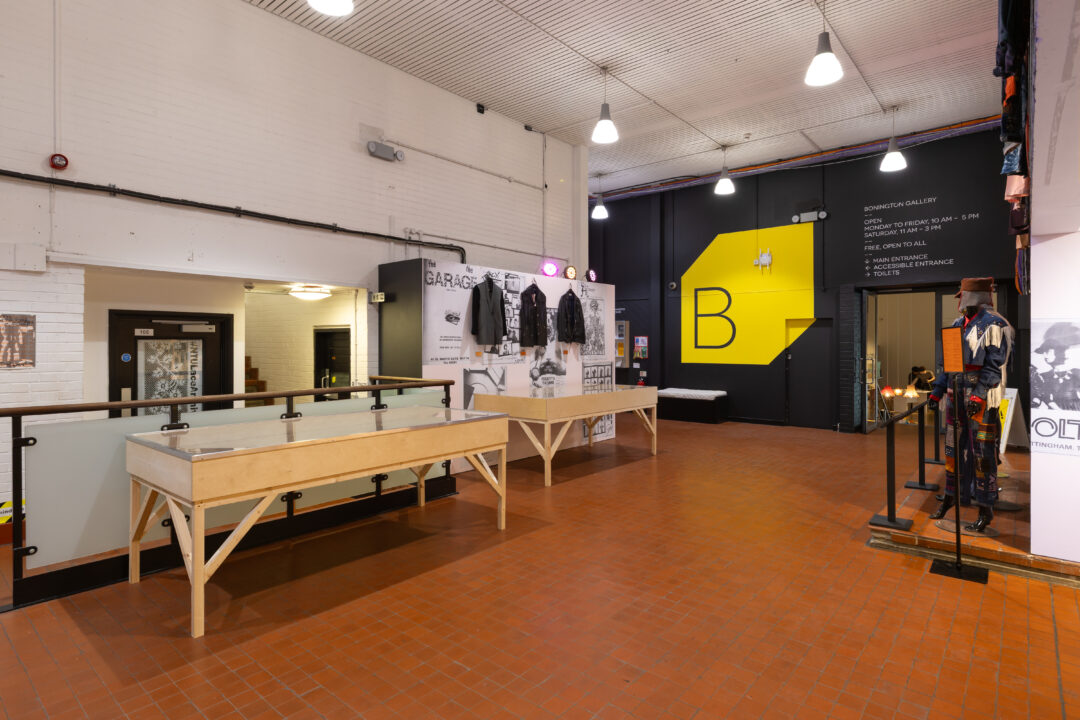
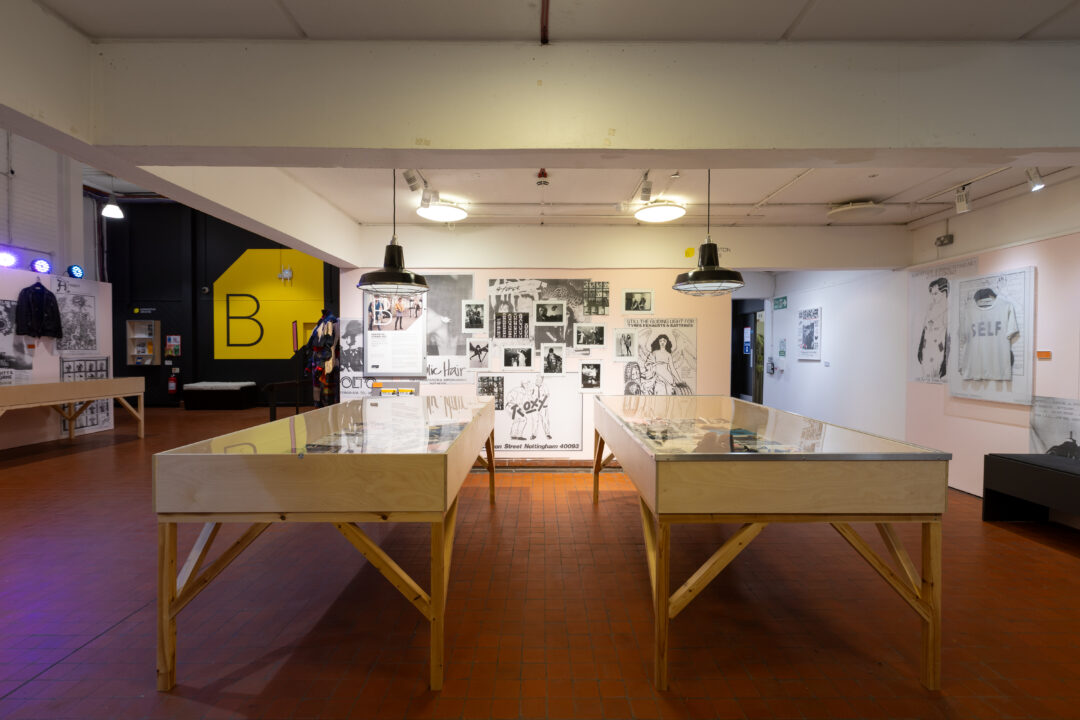
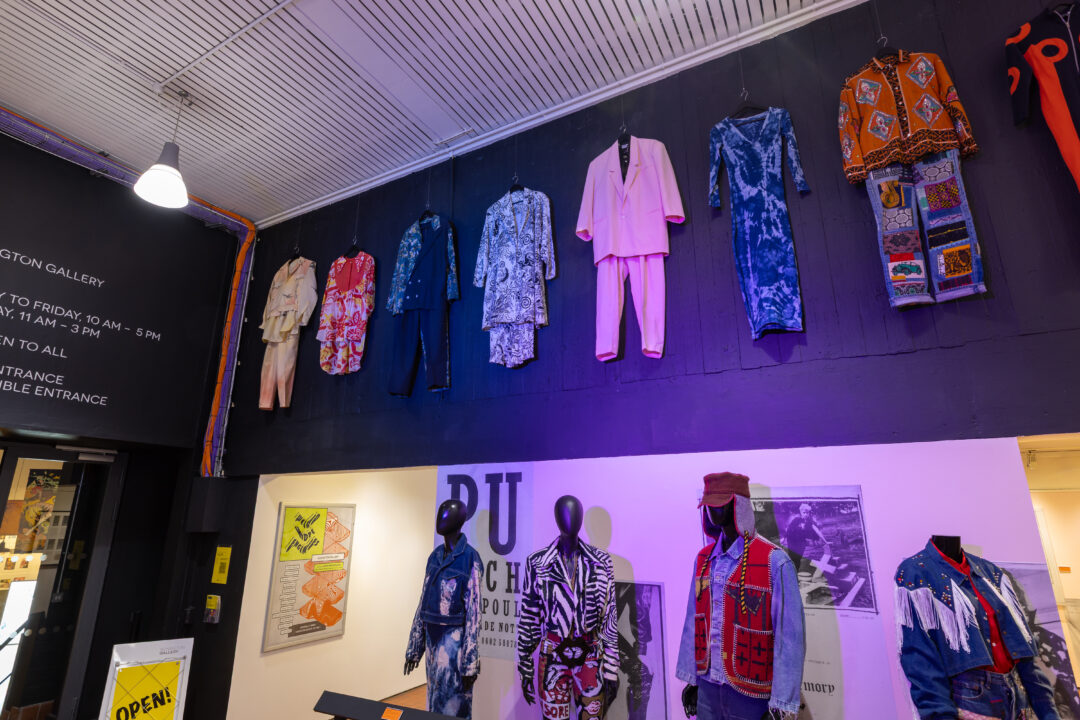
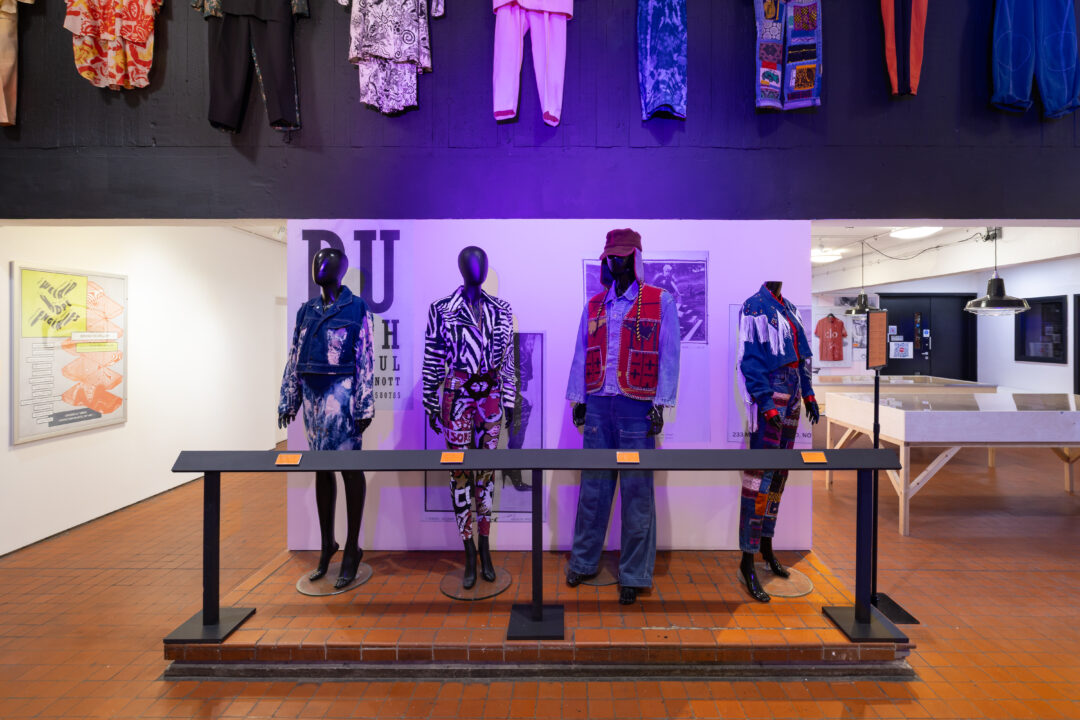

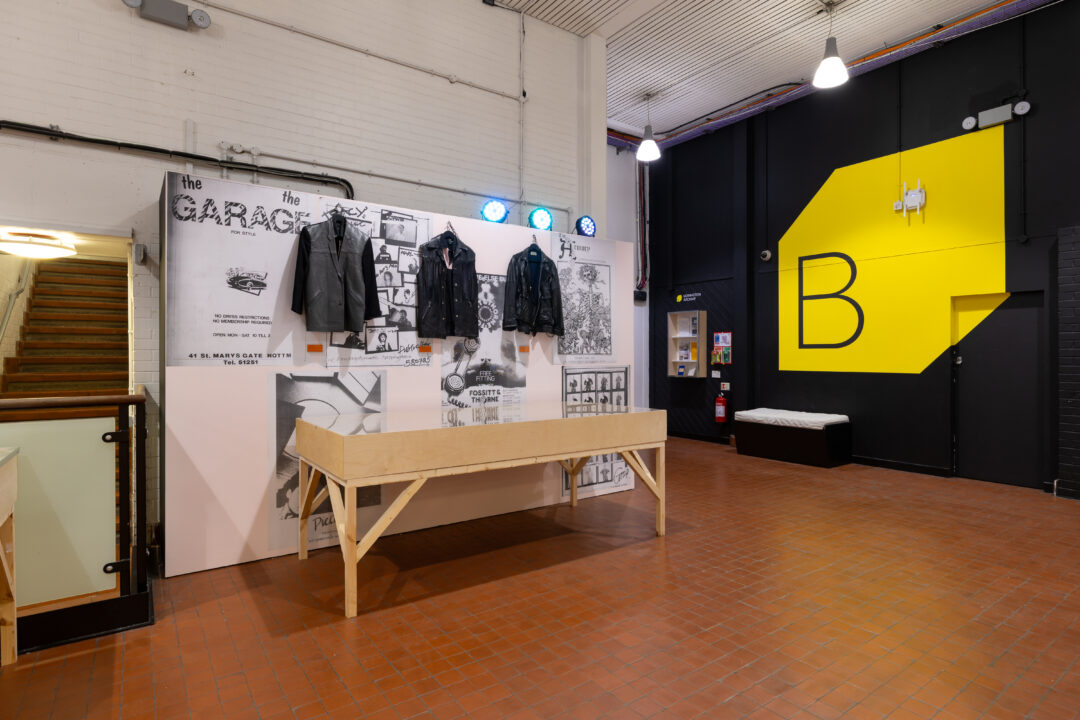
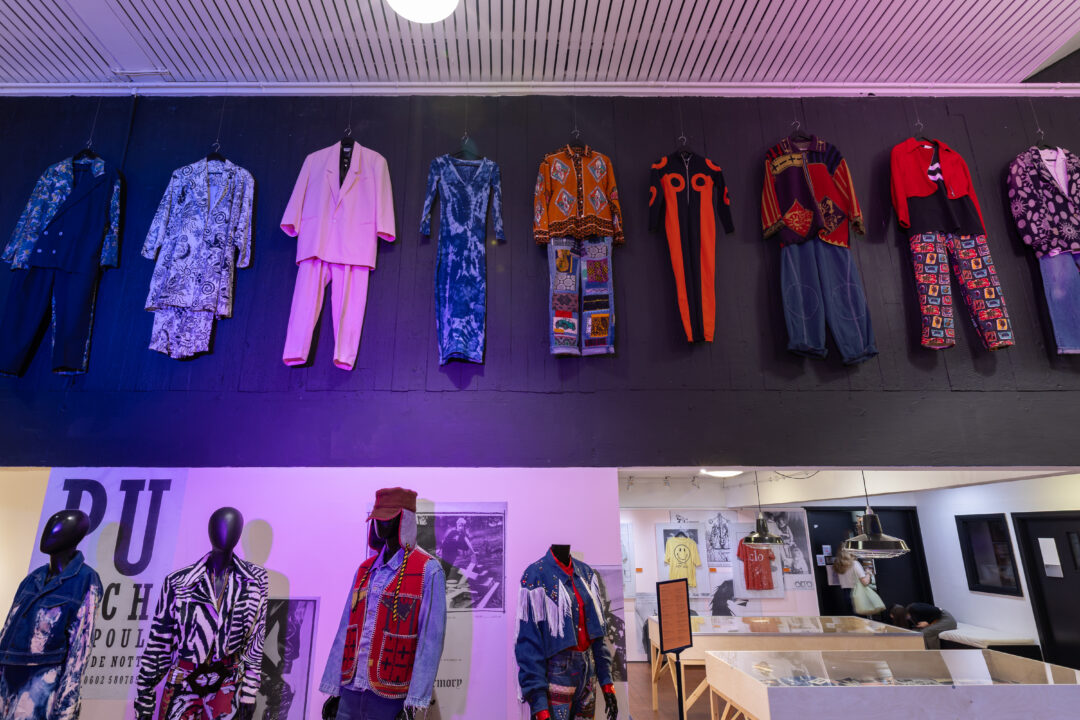
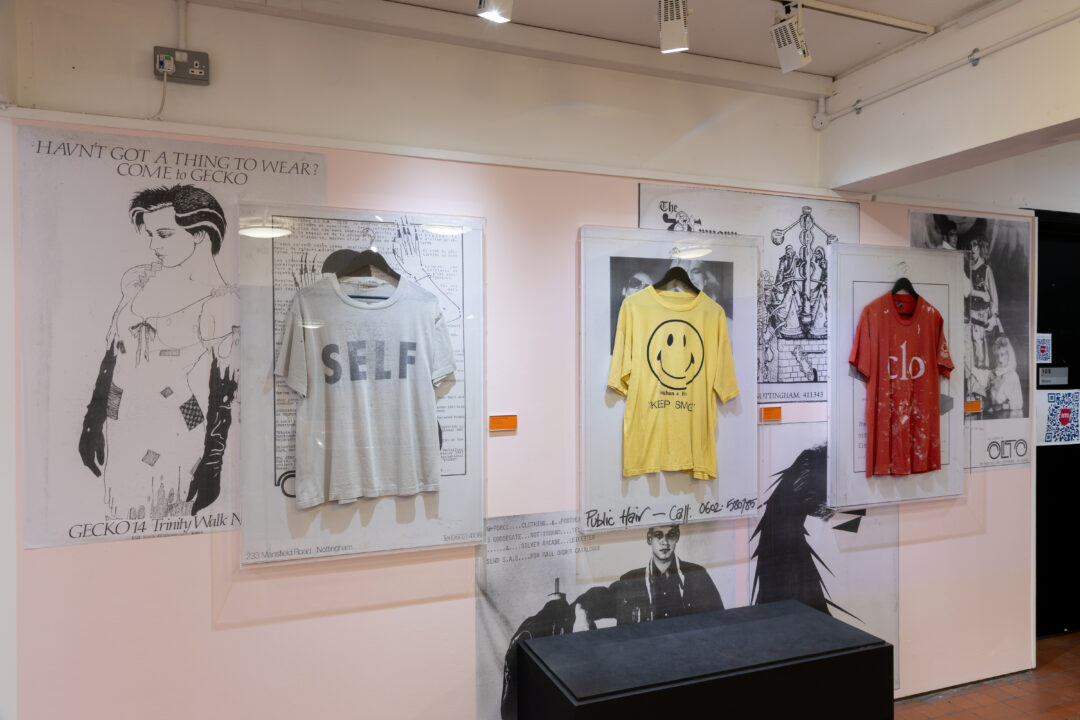
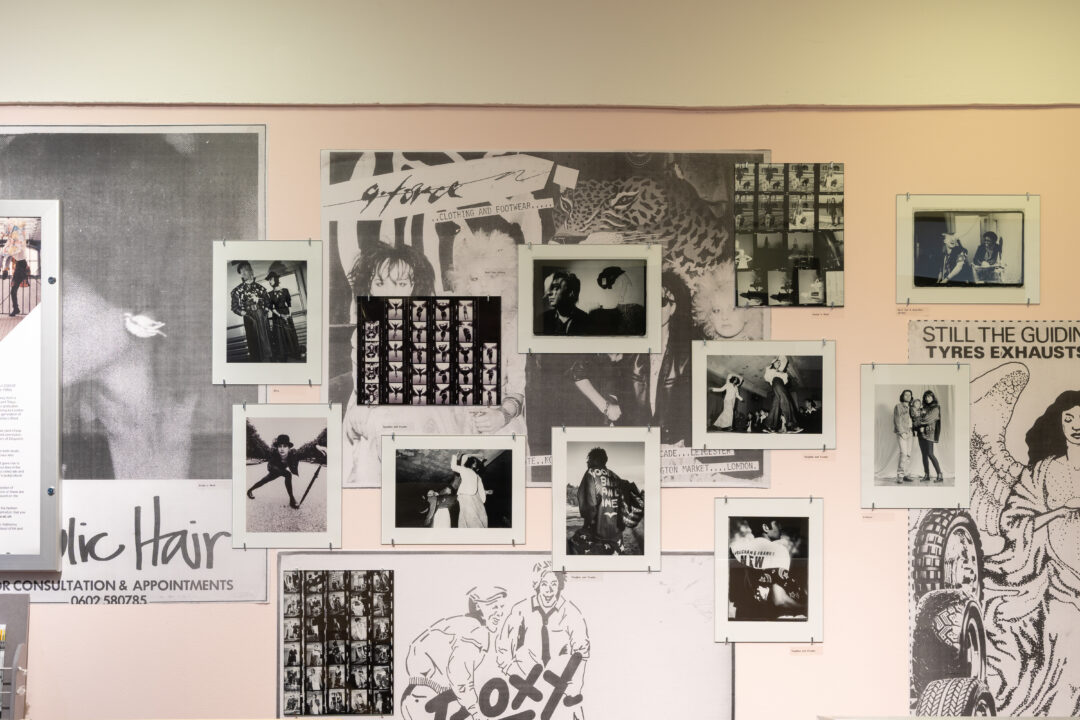

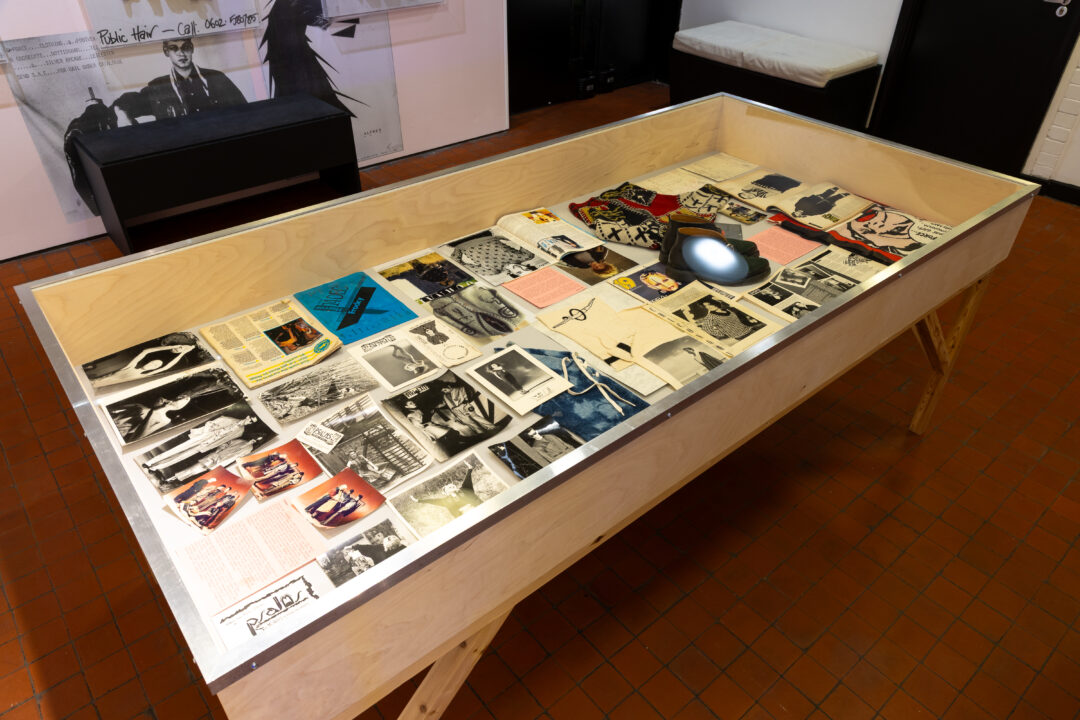
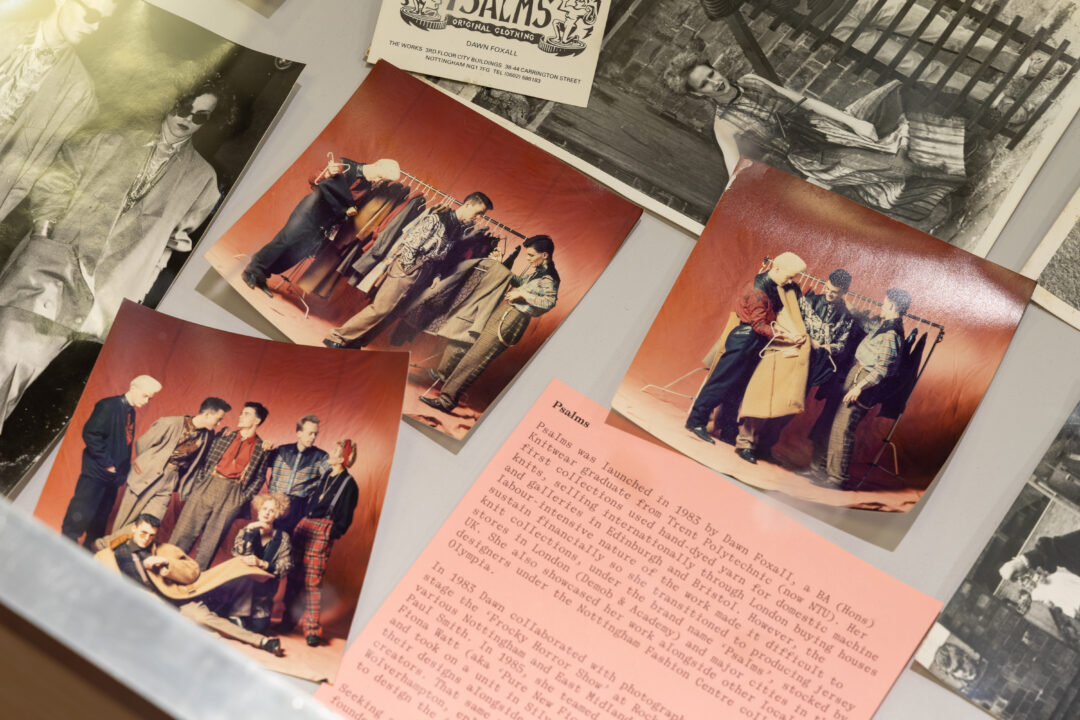
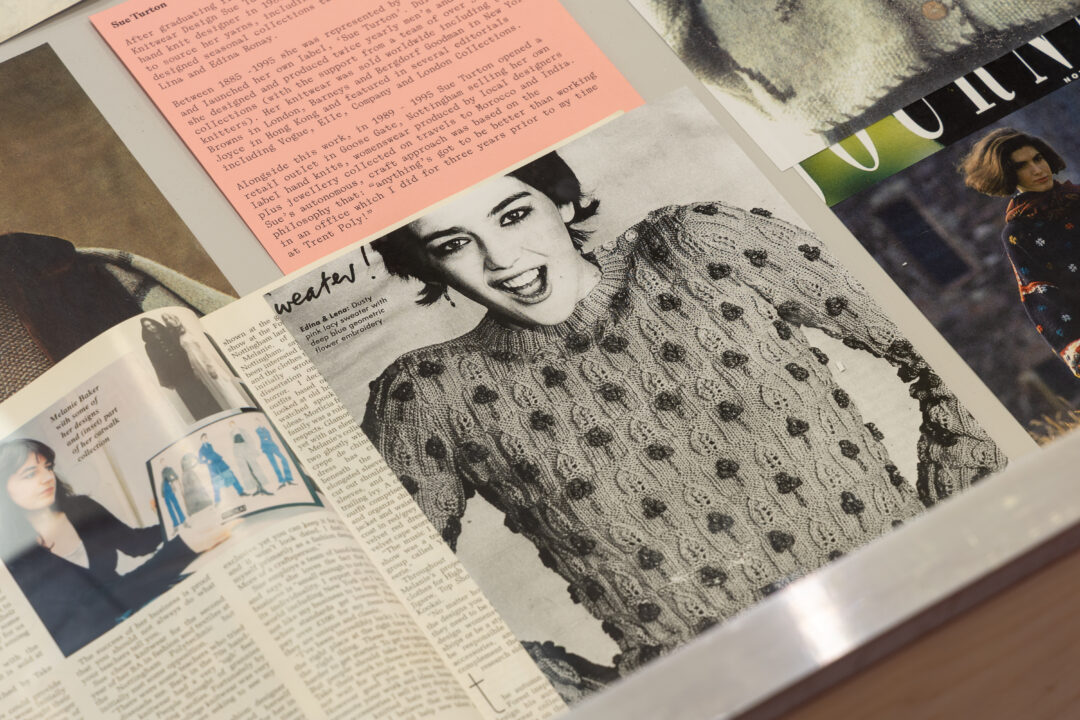
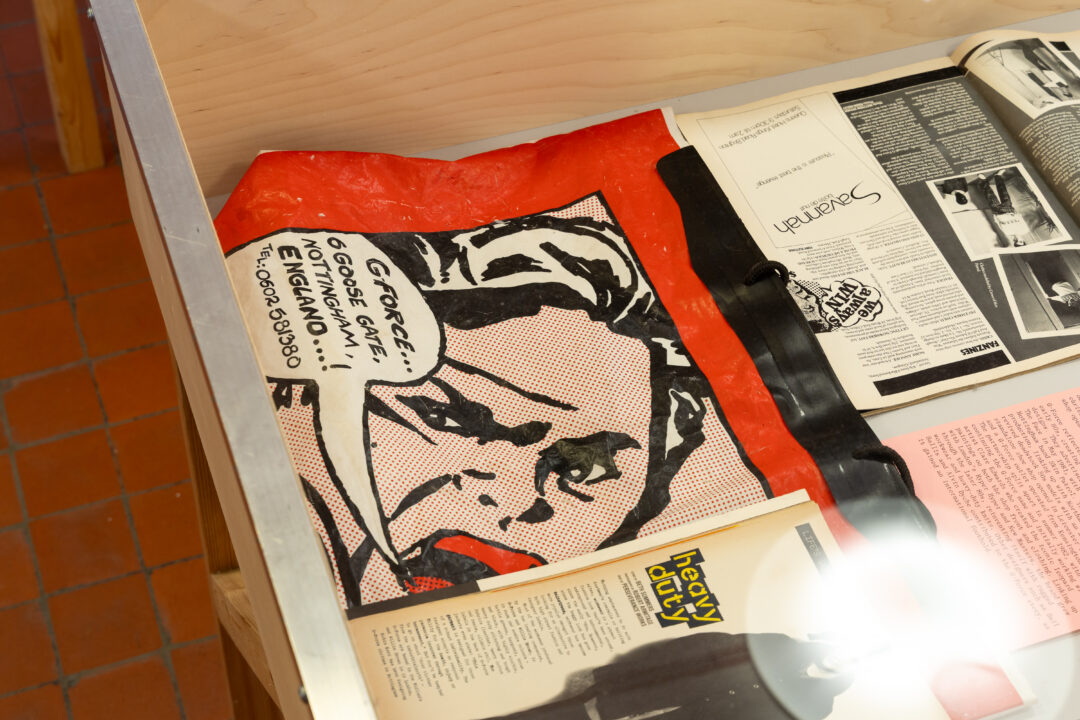
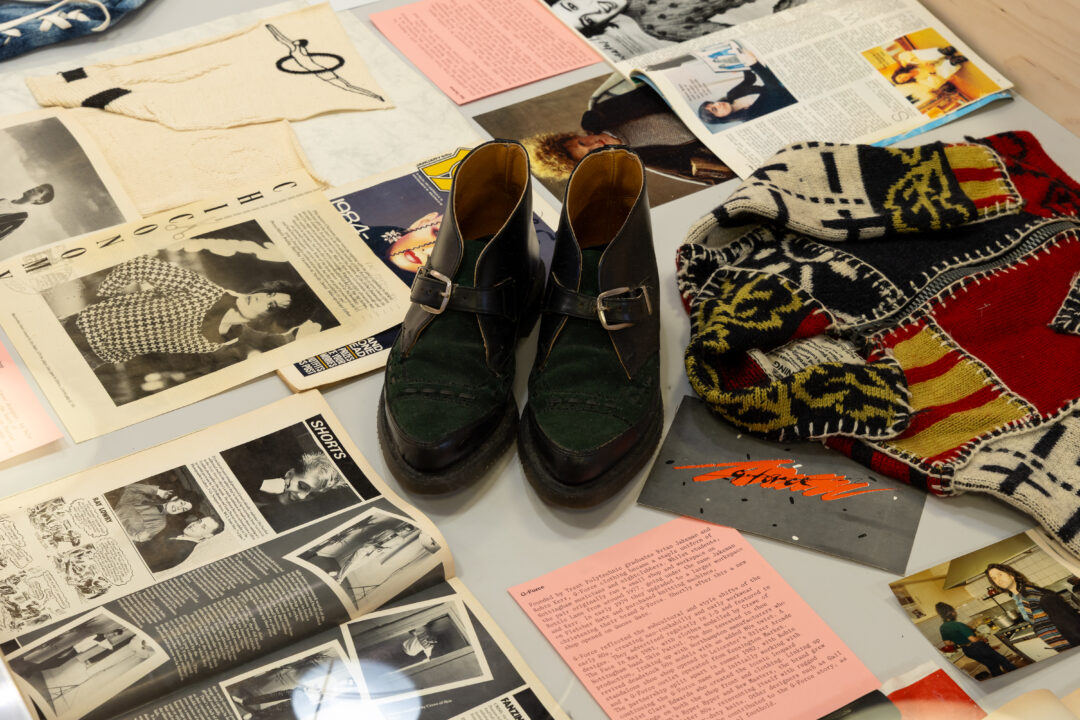

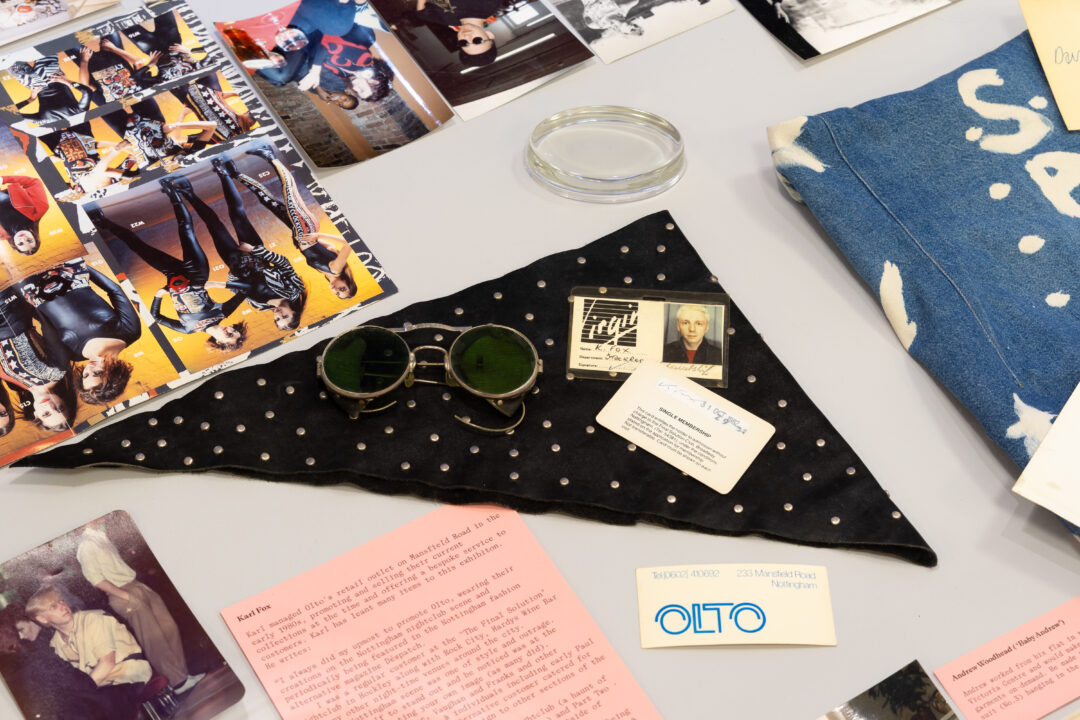
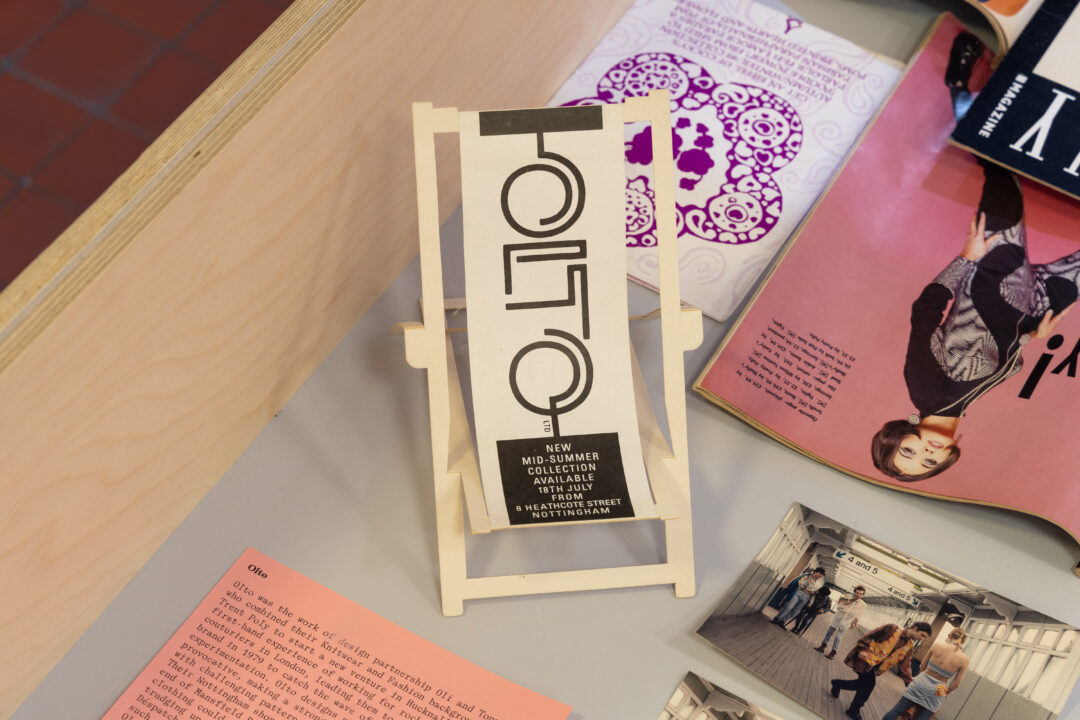

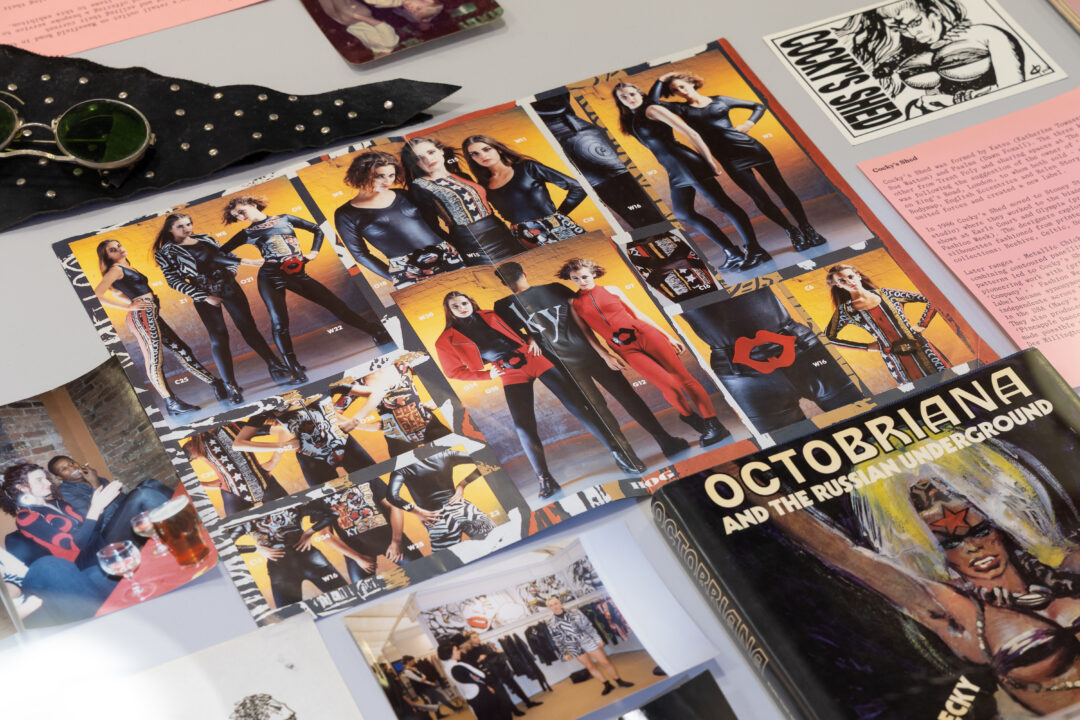
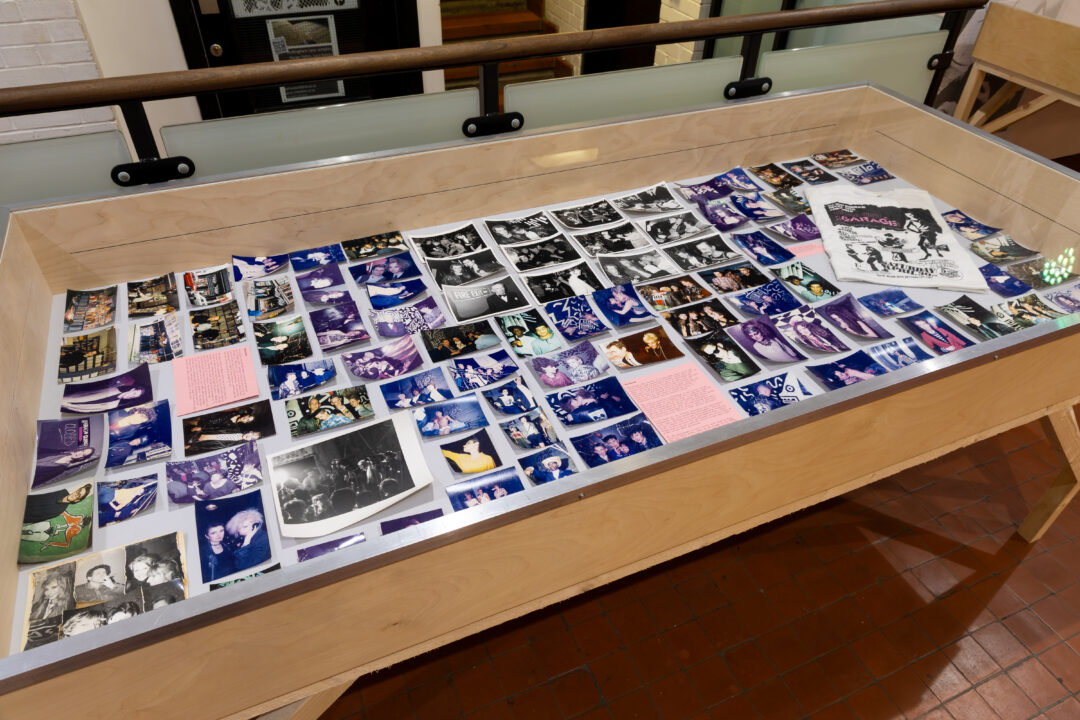
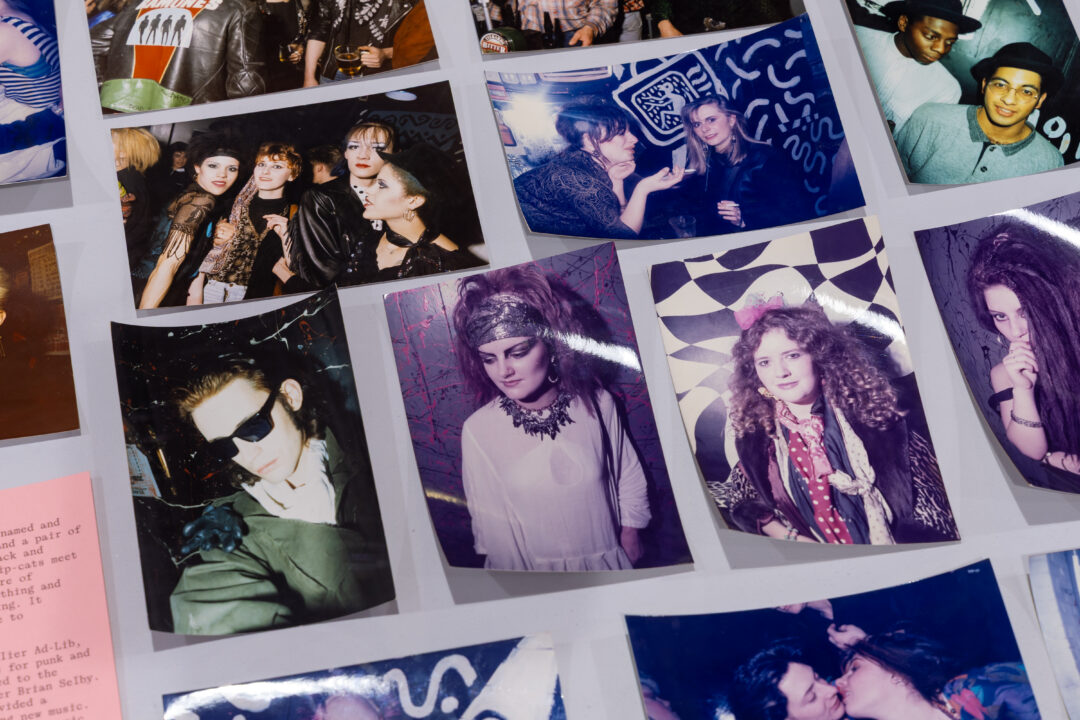


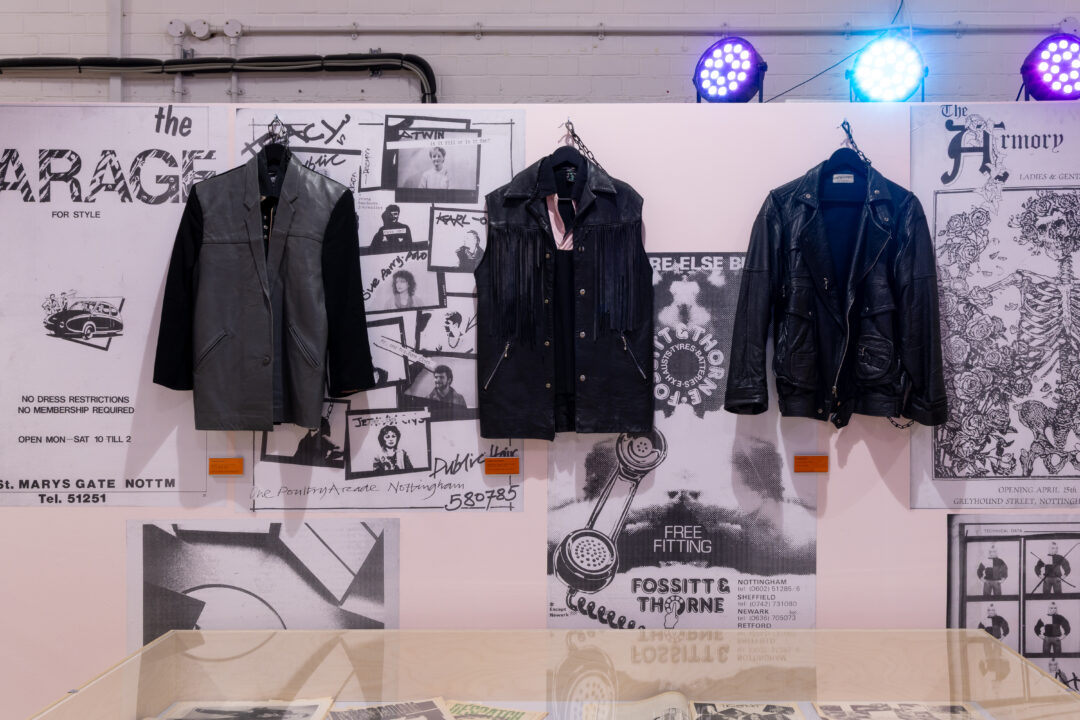
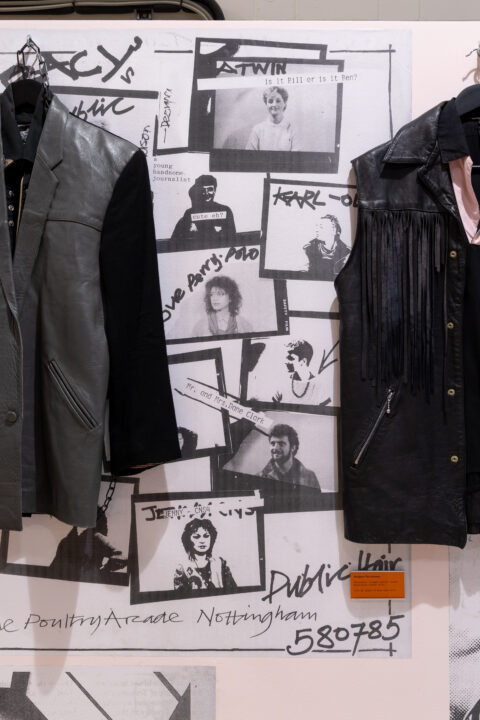

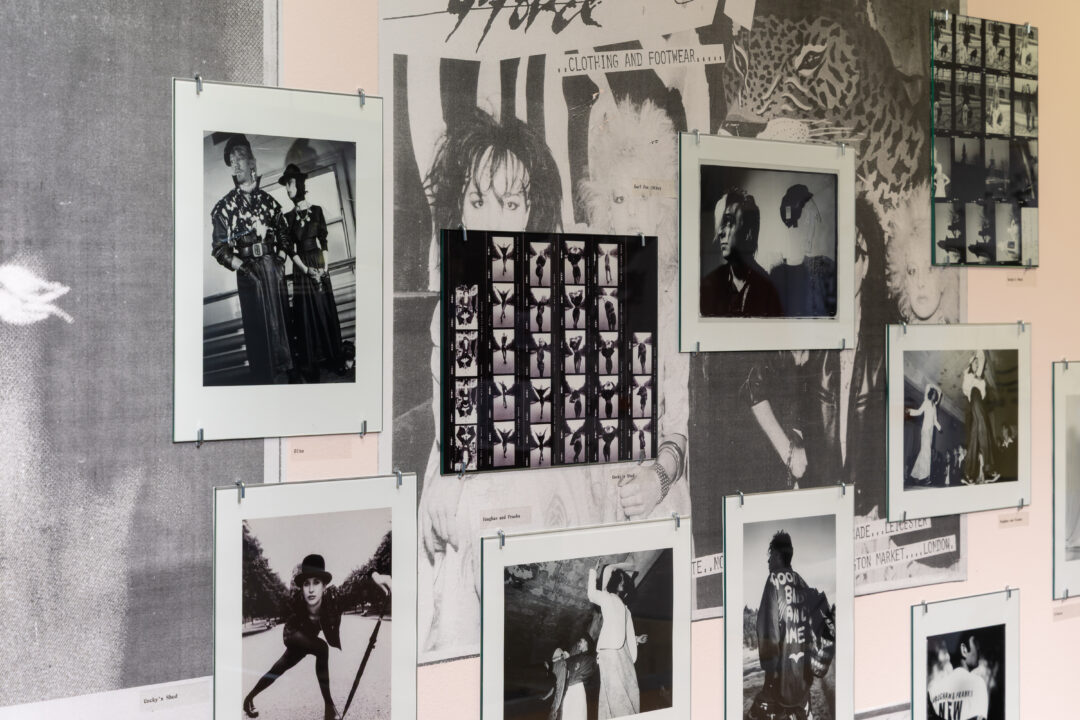

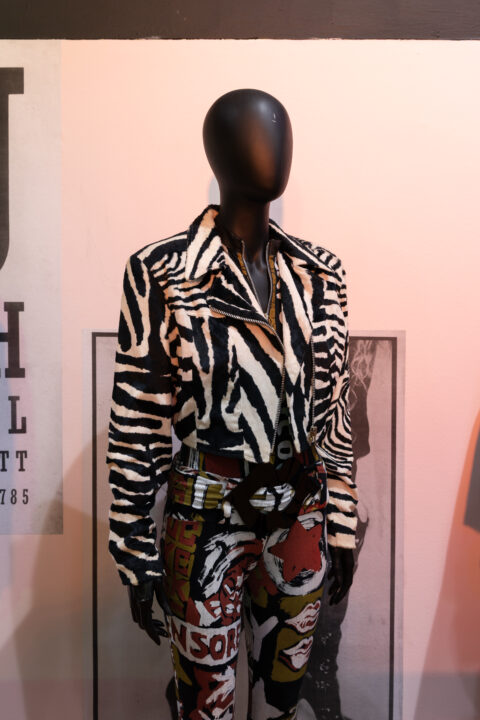
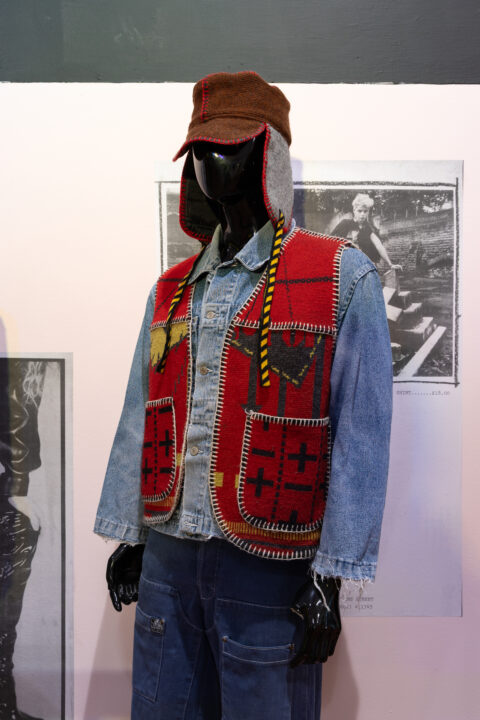
Ian Trowell’s essays
Press
Image: ‘Clockwork Orange’ collection by Olto (now One-BC). Photo by Paul Edmondson, circa 1984.
Following the success of our London’s Calling exhibition, we invited 80s club host and fashion icon, Scarlett Cannon, to join us for an in-conversation event with fashion designer and Nottingham Trent University (NTU) lecturer, Juliana Sissons.
On Wednesday 18 October 2017, Juliana and Scarlett share their experiences of what it was like to be part of the vibrant, transitional youth culture and clubbing scene in London during the 1980s. London was experiencing a social, cultural and political revolution, paving the way for self-expression and rebellion. The club scene in London was explosive and challenged boundaries; and the fashion that came with it was flamboyant, hedonistic and designed to shock.
Chaired by Bonington Gallery curator Tom Godfrey, this in-conversation event posed questions around the importance of fashion, gender and self-expression in the 1980s and what impact it has had on their lives since…
A collection of design memorabilia and reflections, from the 1980s archive of Juliana Sissons.
We have been delving into the archive of fashion designer and Nottingham Trent University (NTU) lecturer Juliana Sissons. Housed within the Gallery Vitrines, London’s Calling reveals an eclectic collection of Juliana’s personal memorabilia and influences, iconic magazine features, design objects, and video footage from the 1980s.
The 1980s was a decade when civil unrest threatened to undermine the country’s social order. Meanwhile, London’s fashion was at its most novel and diverse. At a time when Vogue was covering trend directions in pastel shade twinsets and pearls, the Face, i-D, and Blitz magazines were embracing the raw creativity in the unique style of London’s youth culture.
Young people were making innovative statements about contemporary life through their dress. Not driven by fashion labels of the time, but preferring to create their own ‘signature’ through eclectic mixes of jumble sale finds, vintage pieces, old theatre costumes, and home sewn garments – pushing ideas outside of their traditional influences.
Young fashion designers emerged in an ad hoc way during the early 80s and were echoed in the anarchic environment of the music industry, and in the nightclubs that sprang up spontaneously across the capital. Creative self-expression was the focus that formed the ethos of London’s clubs in the early 1980s and the hedonistic mix of people who were drawn to this scene encouraged creativity and risk taking in design.
This unique display gives a snapshot of Juliana’s life as a fashion designer in London through the 1980s, working with the likes of Lee Alexander McQueen, Frankie Goes to Hollywood, Top of the Pops, Divine, Scarlett Cannon, Leigh Bowery, Isabella Blow, and Judy Blame – capturing the excitement of this unique time of self-expression.













In Conversation with Scarlett Cannon and Juliana Sissons
Wednesday 18 October 2017, 2.15 pm – 4 pm
Join us on Wednesday 18 October as Juliana and Scarlett share their experiences of what it was like to be part of the vibrant, transitional youth culture and clubbing scene in London during the 1980s. London was experiencing a social, cultural and political revolution, paving the way for self-expression and rebellion. The club scene in London was explosive and challenged boundaries; and the fashion that came with it was flamboyant, hedonistic and designed to shock.
To reserve your free place, visit the event booking page on the NTU website. This event is open to students, staff, alumni, and the general public.